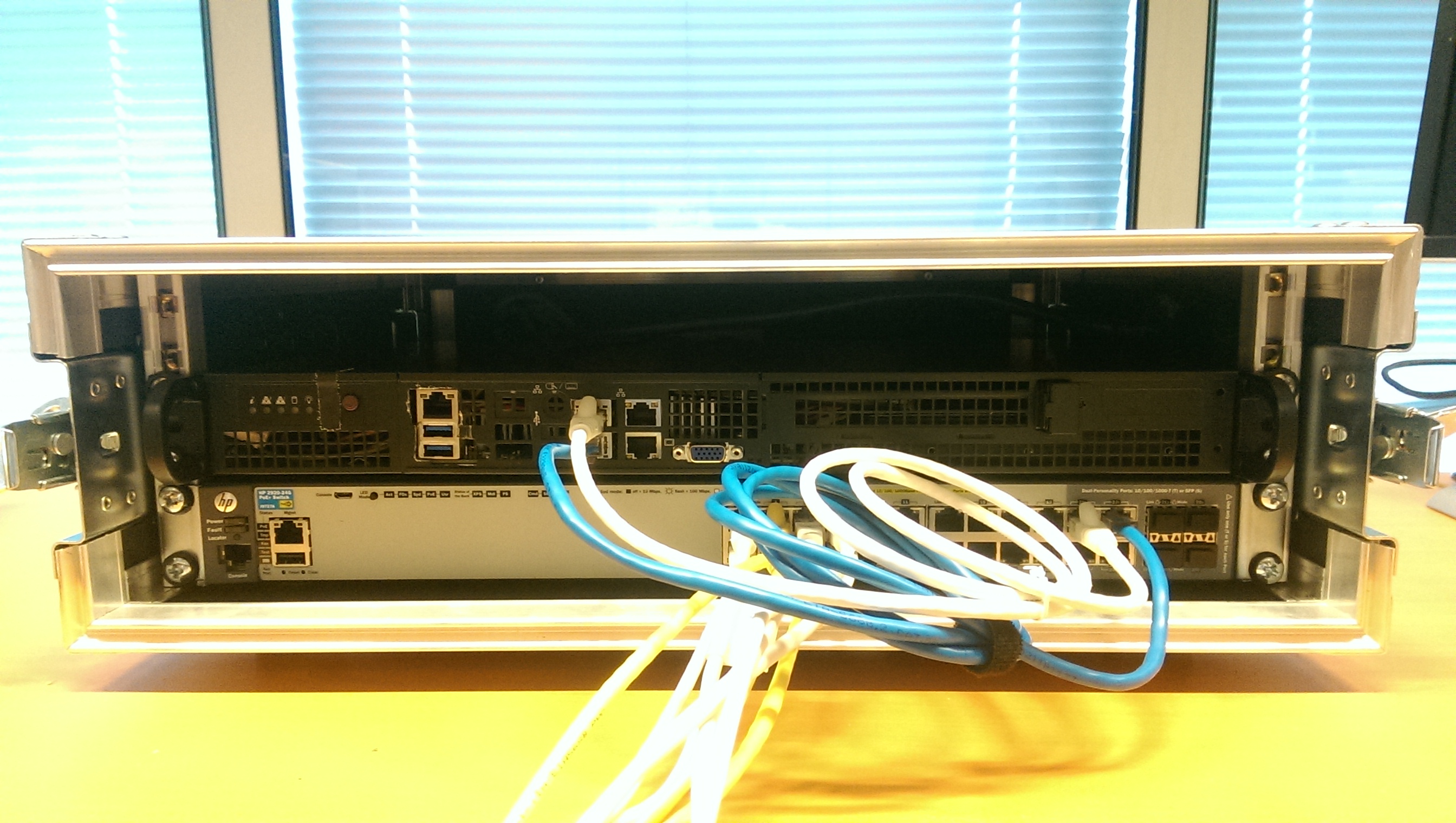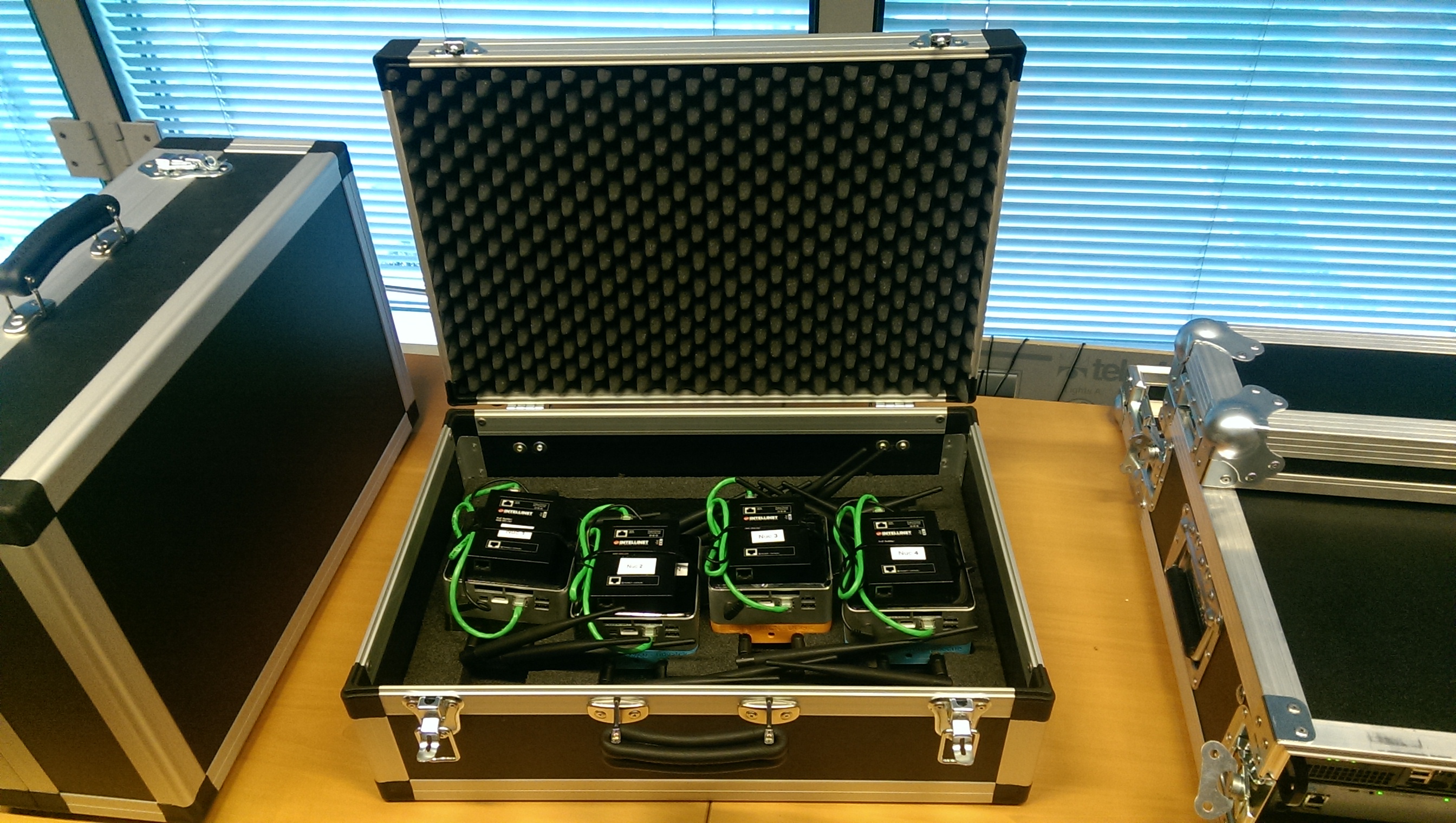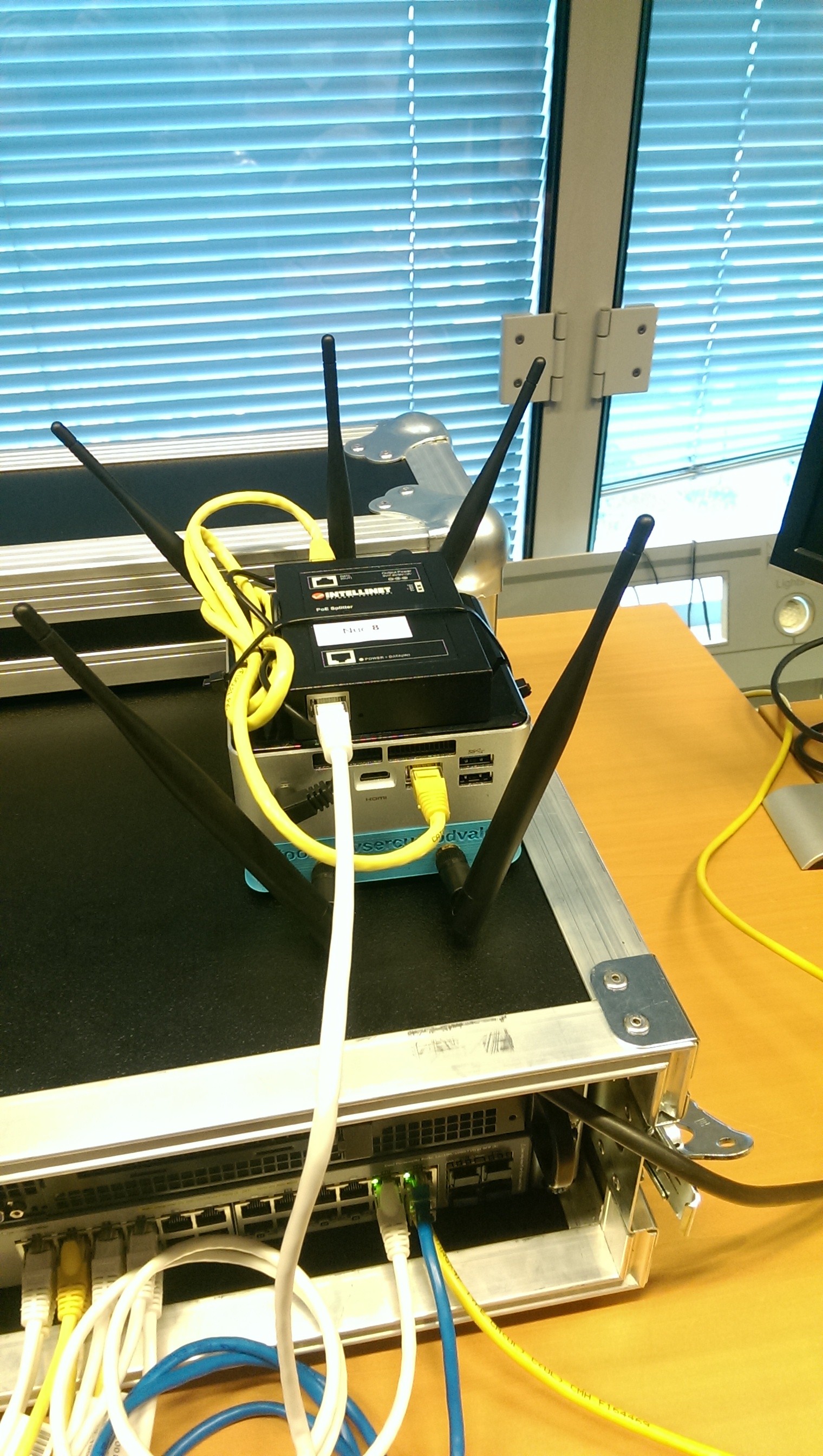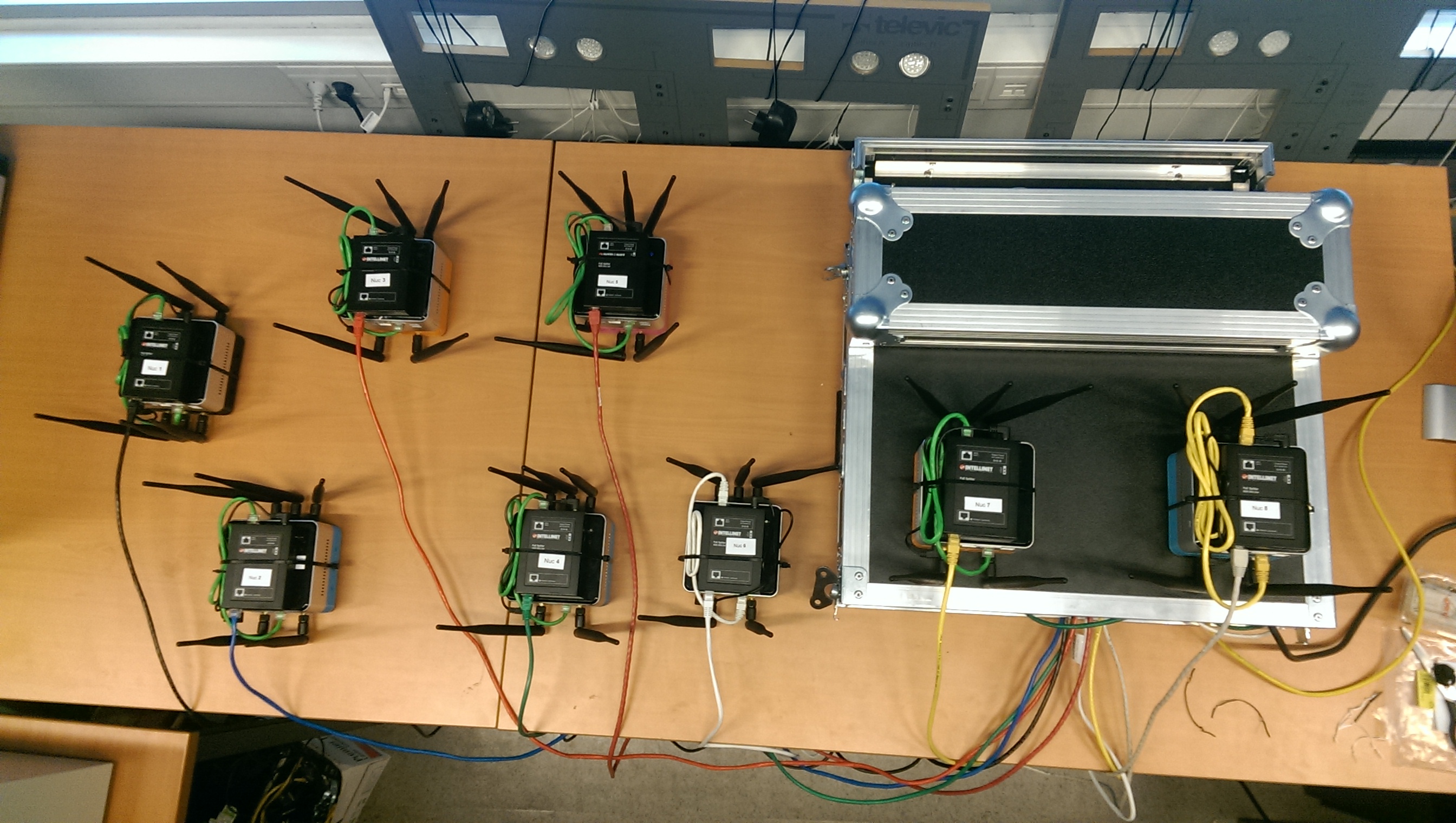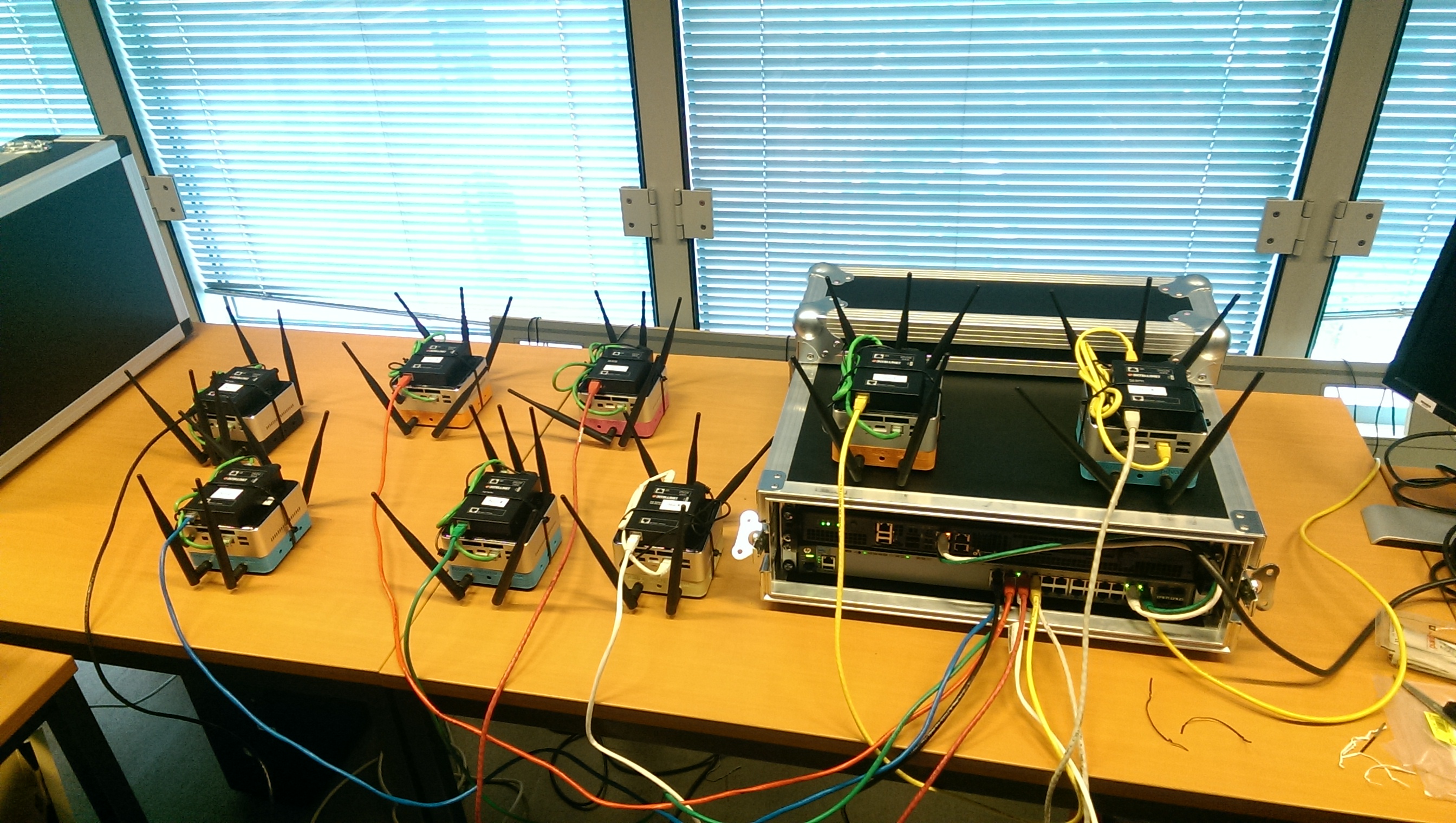
The WiSHFUL project offers access to several wireless testbeds, such as TWIST (TUB), w-iLab.t (iMinds), IRIS (TCD), Orbit (Rutgers University) and a FIBRE Island at UFRJ. All of these testbeds are installed in either office environments or other dedicated testbed environments. Because some research requires doing measurement campaigns or actual testing in heterogeneous environments, the WiSHFUL project also offers a portable testbed to the community.
Detailed documentation on setting up the portable testbed hardware.
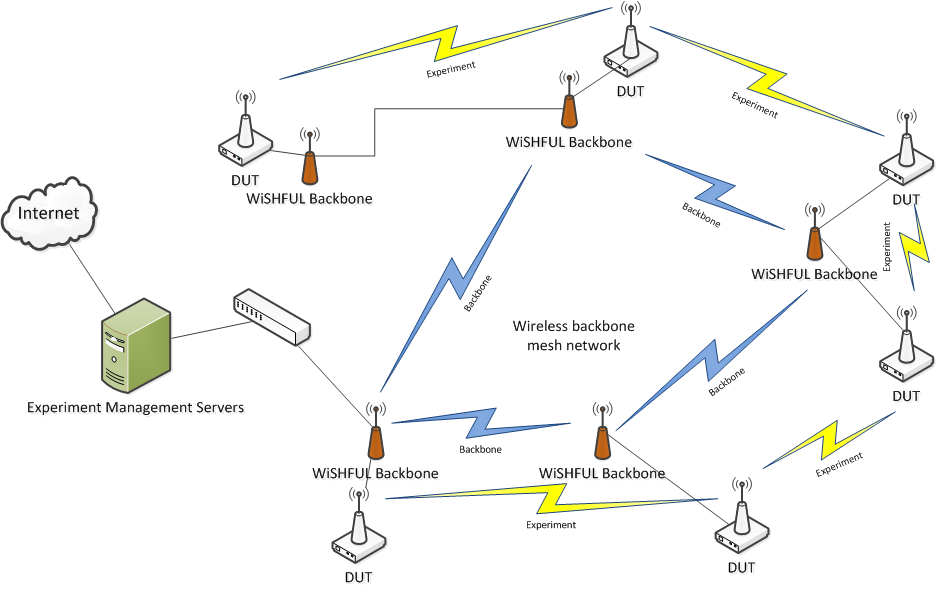
The portable testbed offers almost identical functionality to the experimenters as if they would run their experiments on one of the fixed testbeds:
- The experimenter can use one user account to access all WiSHFUL testbeds, including the portable testbed. The same user account can be used to access all Fed4FIRE testbeds.
- The experimenter can use one tool (jFed) to design and setup the experiment. The same tool can be used to access multiple other testbeds inside the Fed4FIRE federation.
- The portable testbed provides powerful embedded Linux nodes (DUT – Device Under Test) to which the experimenter can gain full (root) access. The nodes are by default equipped with 2 Wi-Fi cards, an 802.15.4 sensor node and a Bluetooth USB dongle. The USB connections of the node can be used to attach extra hardware (e.g. LTE dongles or other USB compatible hardware). The experimenter has full control over the operating system and the software packages that are installed on the DUT. The DUT can also be used as a proxy to access all USB peripherals of the node, like sensor nodes. If the embedded PC provided by WiSHFUL does not satisfy the experimenter’s needs, other hardware can be used as long as it can interface over Ethernet with the backbone nodes (see below).
- To replace the fixed wired backbone, WiSHFUL provides a highly reliable wireless backbone that allows the experimenter to interact with the nodes during the experiment. The interaction with the nodes can be done using either SSH or the OMF6 experiment control framework.
- Measurements can be collected using the OML framework. The (aggregated) live data can be sent over the wireless backbone towards an OML server, or can be stored locally and dumped to a database server after the experiment.
- The portable testbed is packaged into ruggedized lightweight cases to ensure safe and easy transportation of the hardware.
- Deployment of the portable testbed is as easy as plug-and-play to lower the boundary for experimenters. The duration of the deployment of the portable testbed can vary from several hours to several weeks or even months. Depending on the duration of the deployment and the accessibility of the environment in which the testbed is deployed, extra fail-safe mechanisms may be activated to allow for better remote management of the portable testbed. Several ways to power the DUTs are supported: AC power, Power-Over-Ethernet or 19V battery packs.

